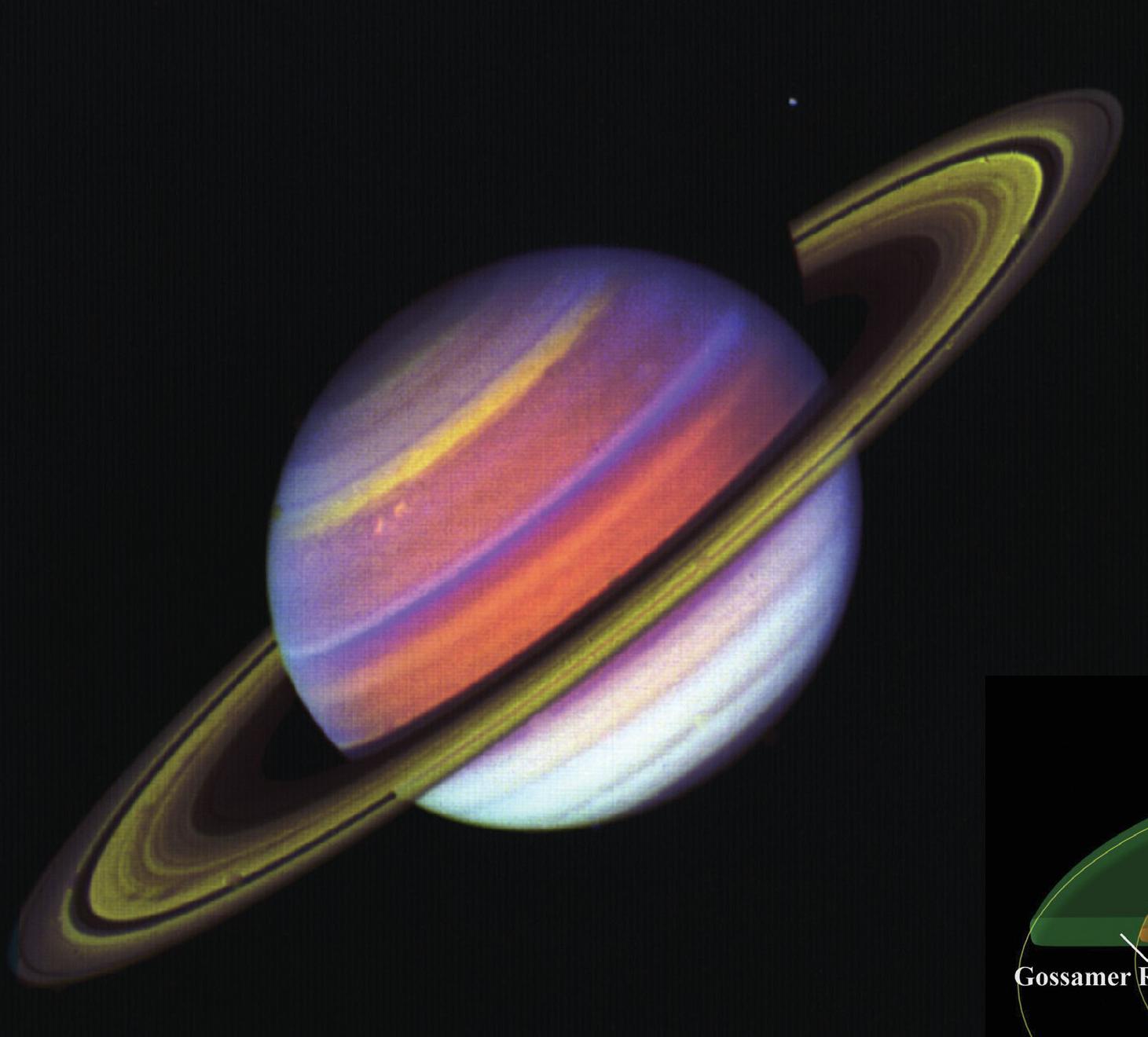
Saturn’s rings (Figure 1) were first seen by Galileo in 1610, though his telescope was not good enough to give a clear view. Christiaan Huygens described them in 1655 as a disc surrounding the planet, and in 1675 Giovanni Cassini established that there were several distinct rings with clear gaps between them. The nature of the rings remained a puzzle until James Clerk Maxwell demonstrated in 1859 that they must be composed of orbiting particles, rather than solid hoops (which would be unstable and break up).
In the 1970s and 1980s, the Voyager missions provided close-up views of Saturn’s rings, which are now known to consist mainly of orbiting icy fragments, together with a few larger rocky objects. The largest rocky bodies, known as moonlets (Figure 2), are thought to be responsible for the gaps between rings, as their gravitational pull disturbs the orbit of the smaller fragments. The Voyager spacecraft also revealed rings orbiting Jupiter, Uranus and Neptune (Figure 3), which are similar to Saturn’s rings though much less substantial, suggesting that rings might be a common feature of giant planets.
Your organisation does not have access to this article.
Sign up today to give your students the edge they need to achieve their best grades with subject expertise
Subscribe




